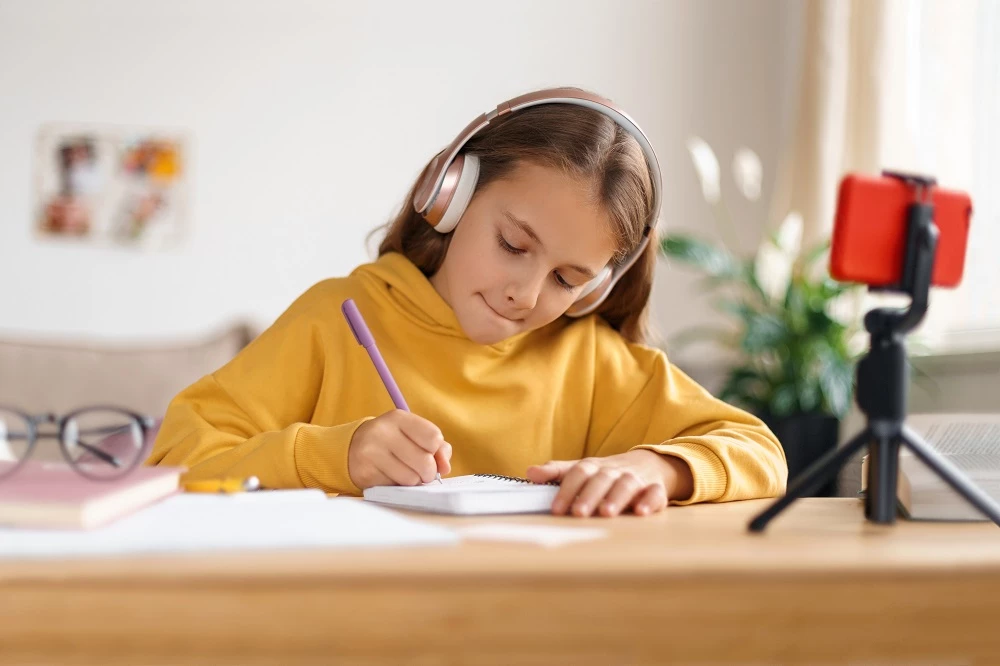Dubai has an excellent education system, including several international schools. Despite this, there are many reasons why parents choose individual and home-based instruction, either as an alternative to, or in addition, to mainstream schooling.
Perhaps you’ve arrived in Dubai mid-term and need a temporary solution while your children wait to be enrolled. Perhaps your child has special needs that you feel won’t be met by mainstream schooling. Or maybe you’d just like them to continue their current curriculum.
Whatever your reasons, the choices for home learning are extensive and can be overwhelming for lay parents. Read on for an explanation of the various options and some insight to the benefits and challenges they present.
What’s the Difference Between Online Learning, Self-paced Learning and Tutoring?
In reality you’ll often find the terms “online learning” and “self-paced learning" used interchangeably. But here, when we talk about online learning we are referring to real-time (live) online classroom situations where;
- the instructor and multiple students are logged on together via Zoom (or some other conferencing technology,)
- classes occur at a specified time,
- there may be limited interaction, usually in the form of questions, and
- there is no (or close to no) individual attention for students
When we talk about self-paced learning we are referring to online or printed material that is
- pre-recorded,
- available on-demand (hence self-paced),
- without human interaction with either an instructor or other students (there may be dynamic quizzes and suchlike incorporated into the study material,) and
- usually supplementary material selected by the students themselves, or their parents.
Tutoring, in contrast, can be either online or face-to-face, and is
- one-on-one (student to tutor,)
- live and fully interactive,
- at a pace adapted to the individual student’s needs,
- available at mutually agreed times that suit the student’s schedule, and
- based on material agreed to between the tutor, the student and the parents.
Selecting Credible Resource Material is a Challenge.
If you’re considering self-paced learning as an option, it’s worth giving the results of a recent Stanford Graduate School of Education study some thought. Researchers uncovered an alarming lack of judgment when it came to adolescents distinguishing between credible versus “fake” news on the internet. Despite being raised in the digital age, the subjects were poorly equipped to question the sources and motivation behind information they were exposed to. The results indicate significant gaps in the digital literacy instruction currently being offered to children.
While the study was focused on election-related material, the findings strongly indicate you shouldn’t leave your teenager to identify his or her own study material off the internet. You can assist by finding curated material associated with credible institutes and formal curricula.
Does Your Child Have the Discipline for Self-Paced Learning?
For some students, self-paced study is a natural and comfortable fit. Others struggle with the lack of supervision and structure.
Carl E Pickhardt Ph.D., writing about developing self-discipline in adolescents, points out that lack of discipline is to be expected of the age group. As children move from the “age of command” to the “age of consent,” they need to learn to self-discipline. And parents need to provide the discipline that will support the safe and healthy growth of their child. Pickhardt points out that this is an unpopular parental responsibility that involves; motivation, instruction, supervision and correction.
In deciding on a preferred home learning solution, parents should try to be honest with themselves about their capacity, in terms of time and temperament, to oversee their child’s self-paced study. It might be that self-paced study would be more appropriate at a tertiary level, once the child has acquired the necessary skills to self-motivate and discipline. (And even then, drop-out rates for self-paced study are higher than any other methods).
Teacher-Student Relationships are a Strong Indicator of Academic Success.
Perhaps the most important thing missing from online learning is the opportunity for the student to develop a relationship with his or her teacher. Mary Helen Immordino-Yang, a cognitive neuroscientist at the University of Southern California, quoted in Education Week, says effective teachers “engage with students around their curiosity, their interests, their habits of mind through understanding and approaching material.”
The same article refers to a Review of Educational Research analysis of 46 studies that found that strong teacher-student relationships were positively associated with improved academic engagement, attendance and grades.
Dubai prides itself on the high level of integration ex-pat children experience in relation to other middle east destinations. Regardless, ex-pat child syndrome is something to keep an eye out for if your family have recently moved to the city. A tutoring relationship can be an invaluable connection for a home schooled student. An expat child can feel pressured to maintain a happy demeanor in the face of a move they know is for the greater good of the family. It can be easier to express feelings of isolation and depression to an adult closer in age, and slightly removed.
Four Dimensional Feedback is Critical for Learning.
John Hattie’s seminal study Visible Learning (2009), supports the finding that teacher-student relationships are of great importance. His findings also showed the depth of the feedback necessary to adequately and effectively impact a student. He refers to four dimensions of feedback; task-related feedback, self-regulation, feedback on self as a person, and the timing of feedback.
In a 2007 paper, written with Helen Timperley, the pair conclude that most current assessments are designed for external accountability and fail to give adequate learning feedback. They impress on readers that it is the “feedback information and interpretations from assessments, not the numbers or grades, that matter.” Testing fails when it is used to measure change rather than as an active feedback mechanism. And that is the challenge with online learning where there either isn’t an instructor, or where the instructor’s input is reduced to “feedback” in the form of test scores.
Blended Learning, Hybrid Learning and the Flipped Classroom.
If you’re left undecided, and thinking each of these learning methods have their advantages and disadvantages, you’re not wrong. In fact, a new trend has appeared in teaching in the last decade – blended learning, sometimes referred to as “hybrid learning,” and its most popular subclass, the “flipped classroom.”
Blended learning combines traditional classroom education with a digital learning environment, often online. Hybrid learning puts more emphasis on the online, and the flipped classroom approach gets students to review material ahead of classroom time. In the latter case, the teachers are able to allocate more time on areas that their students struggle with, than on introducing them easily digestible, basic material.
What is being acknowledged by the rise of these methodologies is that different modes of learning are better for some things and some students than others. Self-paced learning is ideal for permanent content that doesn’t change frequently, and it works well for disciplined students who value flexibility. Online and classroom learning is better suited to rapid changing content, that needs to be curated by professional educators. While classroom learning and tutoring are best to ensure four dimensional feedback and establish valuable teacher-student relationships.
The Role of Tutoring in Blended Learning.
As blended learning unfolds, we are learning exactly how critical a role tutoring has to play in the mix.
Chafiq and Tolbi’s 2017 study of “Tutoring Functions in a Blended Learning System,” concluded The transition from classical education to hybrid education is part of a paradigm shift… In addition, the success of a hybrid system is conditioned by the development of the tutoring functions of the teacher/tutor. Indeed, the presence of these functions can influence the motivation, creativity and performance of students.
Concluding Thoughts
Your child’s education is of paramount importance. Choosing a mode of instruction that that will engage and maximize his or her potential is something all parents strive for. And recognizing the importance of human relationships in this process can’t be ignored. While there are budgetary considerations that we have not discussed in this articles, a blended or hybrid approach with at least some component of individual attention seems to hold the most promise.








